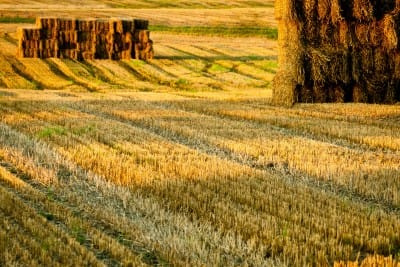The Dickinson Press (North Dakota) (link no longer available)
By: Betsy Simon
Minus the lack of chemicals on his crops, life at Patrick Frank’s 1,200-acres of organic farmland north of South Heart mirrors that of any other farmer.

“There’s not really a difference in what I do, except that when spring comes instead of just jumping in a sprayer to spray weeds, I work with the equipment to get rid of weeds,” he said. “I also try to do more crop rotation to handle the pest problems. I guess maybe it’s more labor intensive because I’ve got to get out there and work the fields more often, whereas someone who’s not an organic farmer can just go out and put crop in the ground and spray, and they’re done ’til harvest.”
Organic farming is the fastest growing farming segment in a decade.
California leads the nation in organic cropland, followed by North Dakota, Minnesota, Montana and Wisconsin, according to the U.S. Department of Agriculture.
The USDA also reported in 2008 that 45 states had certified organic farmland, but organic farming still accounted for less than 1 percent of the nation’s cropland.
Frank, who lives 20 miles northwest of Dickinson on his family’s fourth generation farm and serves as the North Dakota Organic Advisory Board’s West Region Producer, began farming in 1992 and was certified as an organic grower in 1996.
“I’ve basically been farming like an organic farmer since I was a kid,” Frank explained. “My folks farmed like organic farmers when I was a kid, and they always farmed that way even though they weren’t certified at the time.”
Depending on the year, weather and what is needed for feed, Frank’s organic farm could have wheat, oats, barley, flax, alfalfa, sweet clover, beef cows or hogs.
But chemicals won’t be found on Frank’s crops, no matter the year.
“Because I don’t spray crops I don’t have to worry about kids or myself working with chemicals, but that also means I may not have that picture perfect, weed-free field,” he said. “Sometimes I may have that, but I’ll also run into years that the fields don’t looks so good if Mother Nature doesn’t cooperate.”
Organic farming is about seeking advice and thinking outside the box, Frank said.
“It helps to talk to different guys because what works on one farm may not always work best on another farm, and talking to different people will help you get ideas about what may or may not work for you,” he said. “Just think about all of the advice and slowly try it and see how it works for you. Somethings might work great, others may not. Just try.”
Frank Kutka, assistant director at the North Dakota State University Dickinson Research Center, said he knows of three organic farms in Stark County.
“There could be more though and there is certainly plenty of potential if someone feels so inclined to start an organic farm here,” he said. “I’m not entirely sure why it hasn’t picked up here, but change in mindset and all of the reporting that has to be done might have something to do with it.”
The highest concentration of North Dakota’s organic farms is within a 100-mile radius around Bismarck, said Brad Brummond, chair of the North Dakota Organic Advisory Board and North Dakota State University Extension Agent in Walsh County.
“They have soils that sometimes do not respond to high inputs because they’re in a more arid region,” he said. “It’s also a bit more of culture of the people, meaning it’s more the way they grew up farming. Some people may not switch to cutting edge technology, but instead prefer to do things with a more natural approach.
“It’s takes a different kind of mindset. A person needs to be a problem solver, a proactive person who is patient because there is no cure in bottle for them. These farmers need to stop things from happening, not what until a problem arises to find a solution, and that takes a special kind of person. It’s easy to throw Roundup on the field, but that’s not an option in organic system.”
It takes about three years for land to be converted to organic, Brummond said. There are fees associated with becoming a certified organic farmer and costs vary by crop and certification companies.
Consumer demand for organic goods is up, but Brummond said North Dakota needs to do more to regain its status as an industry leader.
“In the early days of organic farming, North Dakota was one of the leading states in organic agriculture but we’ve slipped because we have an aging population and haven’t added a lot of new organic farmers or acres,” he said. “When you have an industry that can’t supply the needs of demand, either we supply product here or people go elsewhere or quit calling. That’s worrisome to me. The question I have now is whether North Dakota is going to participate or not. We don’t have the growers to provide the product right now.”

